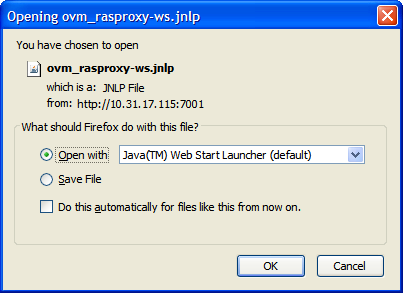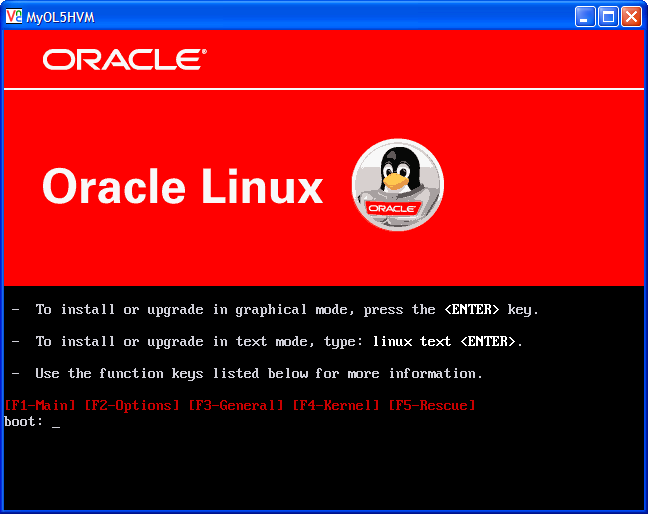You can connect to a virtual machine using its console. The console is the remote control system of Oracle VM, and enables you to work and interact with your virtual machines.
If you have VNC Viewer (from RealVNC), or TightVNC Viewer installed on your client computer, the Oracle VM Manager user interface finds the installation and uses it to create the connection with the virtual machine. Oracle recommends you install RealVNC on the client computer as it renders more quickly, has better keyboard support, and has less mouse control issues than Tight VNC.
If no client viewer is available, the Oracle VM Manager user interface looks for TightVNC on the Oracle VM Manager host computer and uses this to create the connection with the virtual machine. See Oracle VM Installation and Upgrade Guide for information on installing TightVNC on the Oracle VM Manager host computer.
To connect to a virtual machine's console:
Select the Home view, and select the virtual machine in the Server Pools folder in the navigation pane.
Select Launch Console from the Actions menu.
A dialog box is displayed requesting to start a Java proxy to connect to the virtual machine. Click OK.

If a VNC viewer is found, it is started. You can configure which VNC viewer to use with the Options > Configuration menu item of the Java proxy window. Enter the path to the VNC client and click OK. Use quotes around the path if it contains spaces.
TipIf the console does not start, check that your web browser allows pop-ups to be displayed. If you are using Microsoft Internet Explorer, add the base URL of Oracle VM Manager (for example,
http://example.com) to the list of trusted sites in the security settings. You may also need to downgrade the security level from medium to medium-low for the Trusted sites zone.The virtual machine console is displayed. Log in and interact with the virtual machine as you would through any other VNC session. This example shows the initial installation screen for a virtual machine created with an Oracle Linux operating system ISO file.

If required, enter the user name and password of the guest operating system to log in to the operating system.
Depending on the method by which you created the virtual machine, you may need to continue with some further tasks before you can use the virtual machine.
If you created the virtual machine based on a template, you can directly use the guest operating system and applications installed in advance, without any further configuration.
If you created the virtual machine using the fully virtualized method, the installation of the guest operating system is triggered after your first login. Follow the installation wizard to install the guest operating system. For more information on creating virtual machines using the fully virtualized method, see Section 7.7, “Creating a Virtual Machine”.
NoteYou must install the guest operating system using a single ISO file. If your operating system installer consists of multiple ISO files, you cannot install it.
For information on the supported guest operating systems, see the Oracle VM Release Notes.